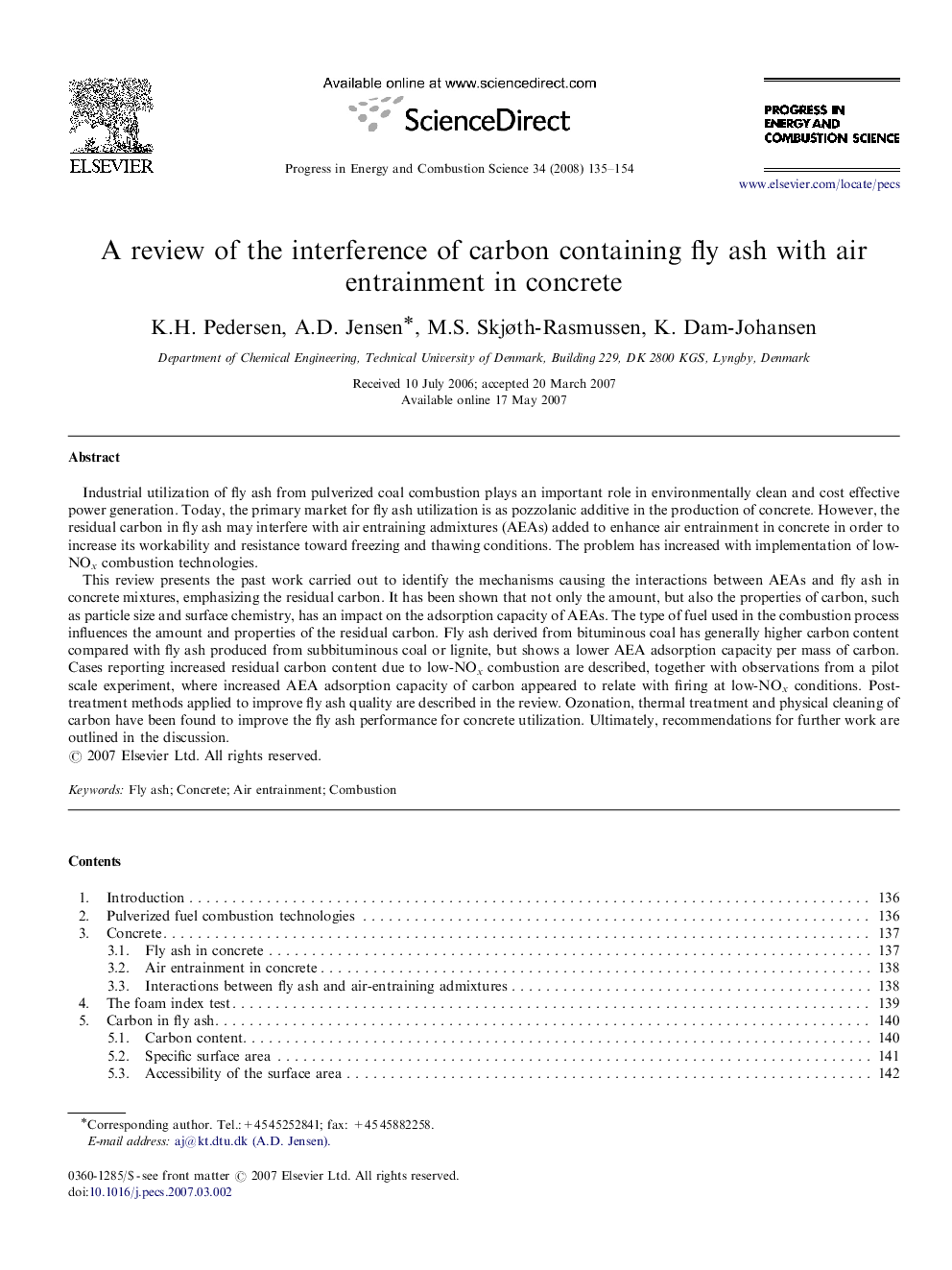| Article ID | Journal | Published Year | Pages | File Type |
|---|---|---|---|---|
| 241830 | Progress in Energy and Combustion Science | 2008 | 20 Pages |
Industrial utilization of fly ash from pulverized coal combustion plays an important role in environmentally clean and cost effective power generation. Today, the primary market for fly ash utilization is as pozzolanic additive in the production of concrete. However, the residual carbon in fly ash may interfere with air entraining admixtures (AEAs) added to enhance air entrainment in concrete in order to increase its workability and resistance toward freezing and thawing conditions. The problem has increased with implementation of low-NOxNOx combustion technologies.This review presents the past work carried out to identify the mechanisms causing the interactions between AEAs and fly ash in concrete mixtures, emphasizing the residual carbon. It has been shown that not only the amount, but also the properties of carbon, such as particle size and surface chemistry, has an impact on the adsorption capacity of AEAs. The type of fuel used in the combustion process influences the amount and properties of the residual carbon. Fly ash derived from bituminous coal has generally higher carbon content compared with fly ash produced from subbituminous coal or lignite, but shows a lower AEA adsorption capacity per mass of carbon. Cases reporting increased residual carbon content due to low-NOxNOx combustion are described, together with observations from a pilot scale experiment, where increased AEA adsorption capacity of carbon appeared to relate with firing at low-NOxNOx conditions. Post-treatment methods applied to improve fly ash quality are described in the review. Ozonation, thermal treatment and physical cleaning of carbon have been found to improve the fly ash performance for concrete utilization. Ultimately, recommendations for further work are outlined in the discussion.
